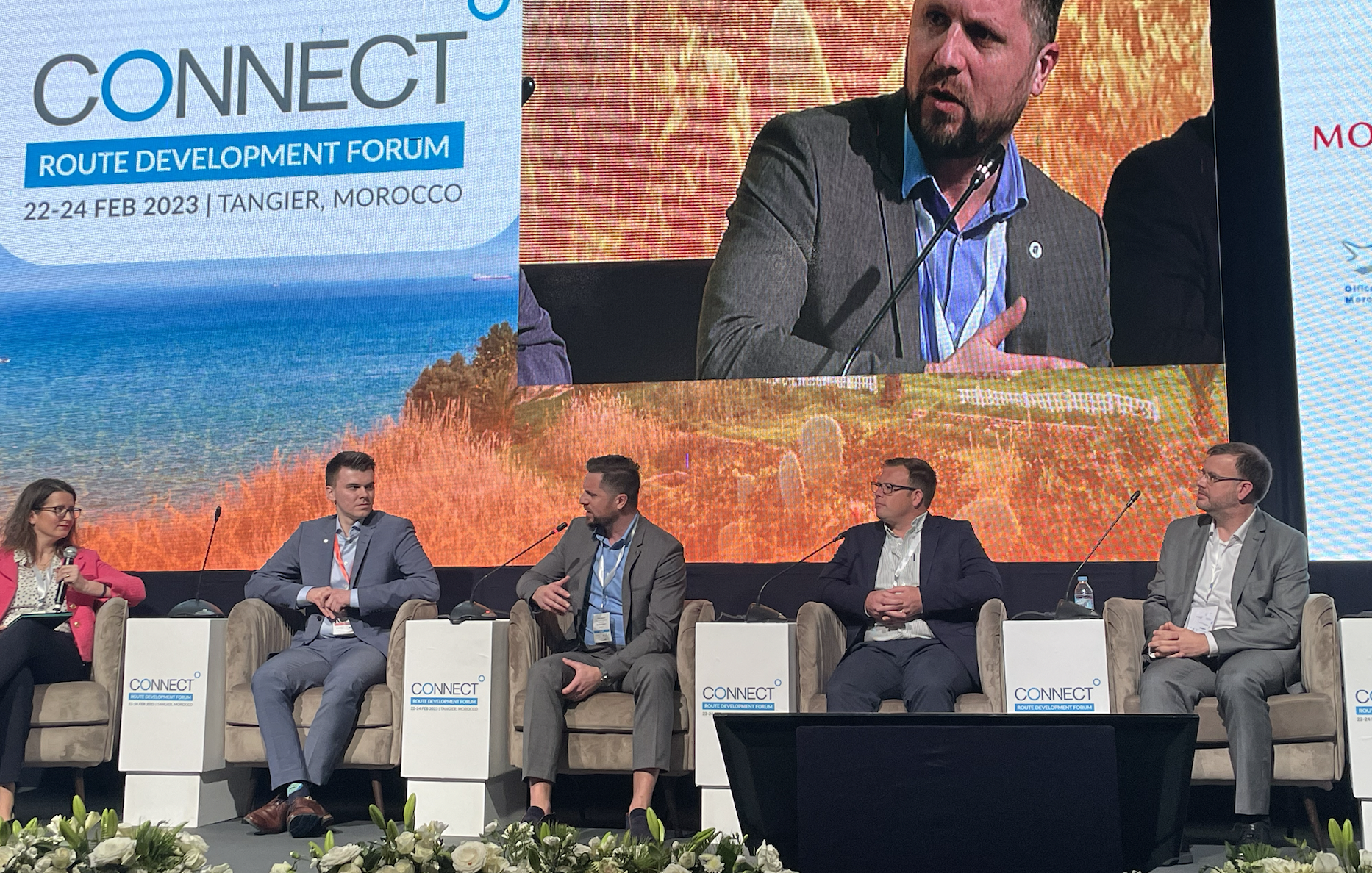


While airports and airlines don’t always see eye to eye, when it comes to decarbonising the sector they are completely aligned. That was the messaging during a panel discussion on scope 1,2 and 3 emissions at Connect 2023 which is taking place this year in Tangier, Morocco.
As a hard-to-abate sector, emissions from aircraft while they are flying are by far the largest greenhouse gas contributor in aviation. But there are other areas across ground handling and airport operations where target setting and decarbonisation strategies must be implemented.
With 27 years ahead of us to achieve the industry’s net zero goals, Kata Cserep, Managing Director, Aviation, Travel and Tourism at ICF, opened the session looking back over the 27 years from 1990 to 2017 to see what the key highlights were in terms of addressing climate change. “There was a 60% increase in global carbon emissions overall and a 110% increase in global aviation carbon emissions,” she said, before adding: “With aviation expected to return in the long run to forecasted growth of more than 3% per year radical changes need to happen.”
Pointing out that there is increasing commitment from industry players, as well as incentives and obligations that are available, she also noted one of the step changes in recent years is that the “financial community is now willing to invest and commit to decarbonising aviation. It’s going to be expensive but there is no shortage of capital. The challenge is to join that capital up with the right opportunities.”
While most airports currently focus on scope 1 and 2 emissions (those within their control), the panellists agreed that there needs to be greater focus on scope 3 where the emissions are far greater. A key point here to note here is that scope 3 emissions for an airport will be scope 1 emissions for an airline.
The good news is the willingness from all stakeholders to get involved and address the challenges. Eindoven Airport has introduced a ‘sustainable take-off and landing charge’, which is based on weight, noise emissions, NOx emissions and the timings of each flight.
“Airports have to step up, it’s not necessarily about the quantity but the quality of flights,” said Dean Boljunic, Head of Aviation Development and Partnerships at Eindhoven.
While Dan Van de Munckhof, Route Analyst at Wideroe, said: “cooperating with airports isn’t based on him telling them what to do, but he would like to see airports incentivising more turboprop aircraft, which are less harmful to the environment.”
The problem here said Dean is that his airport is capped on the number of flights it can take. “A turboprop typically has less passenger capacity then other passenger jets so it would negate the efficiency if we had less passengers on more aircraft.”
With plenty of research and development currently going in to increasing supply and demand of sustainable aviation fuels (SAF), hybrid-electric propulsion and hydrogen fuelled aircraft, there is plenty to get excited about for the future of flight.
The evolution of SAFs and other next generation fuels, said Matthew Whitton, VP Supply Aviation and Land at World Fuel Services, is dependent on legislation. “Where we have seen SAF mandates and policy framework being introduced that will be a significant steppingstone to increasing supply and ultimately reducing costs. The efficiency in the supply chain has a key role to play in bringing those costs down.”
Wider communication and education of the end user, the passenger, is also key to increasing demand for next general fuel technologies. Passengers need to understand and be informed of what is being done and what options are available to them as everyone has a role to play in decarbonising the sector and embracing its sustainable future.
Yves Renard, Head of Market Intelligence and Consulting at Airbus concluded: “It’s about working together. We must leave no stone unturned, together and with one voice we will achieve our goals and accelerate positive change!”





